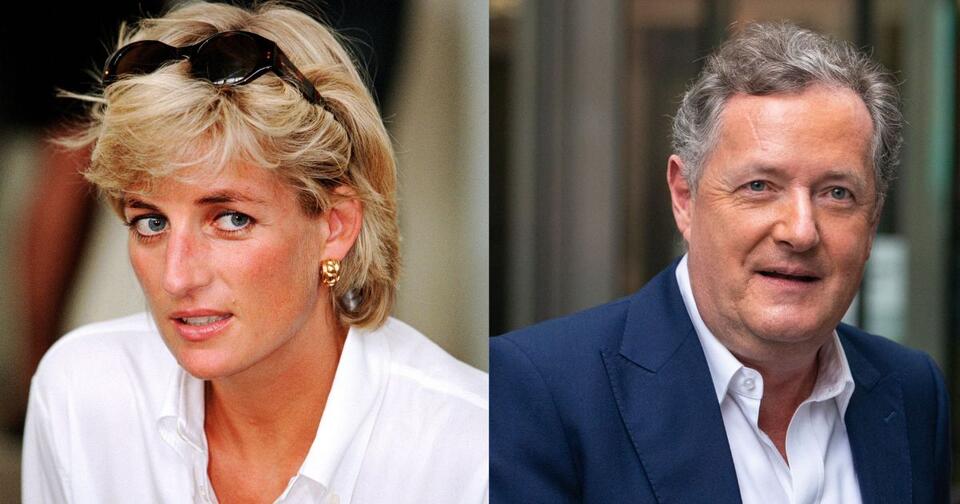Princess Diana used fax machines to personally edit news stories about herself before they were published, according to revelations from journalist Piers Morgan. The former News of the World editor claims he “used to send her stories that we were going to run and she would edit them and fax them back” during the 1990s.

This unusual arrangement gave the Princess of Wales unprecedented control over her media coverage through what was then cutting-edge communication technology. While the public saw Diana as a victim of tabloid intrusion, behind the scenes she was using fax machines to shape exactly how her story was told.
How Fax Technology Enabled Royal Media Control
Morgan, speaking on the “Him & Her Show” podcast, described Diana as “very sharp” and someone who would “manipulate the media ruthlessly when she wanted to.” The fax editing process was apparently part of a sophisticated media strategy that few people knew about at the time.
The setup was remarkably simple: Morgan would fax draft articles to Diana before publication. She would then review the content, make her changes, and fax the edited version back to the newsroom. This gave her the ability to correct facts, adjust tone, or modify quotes before millions of readers saw the stories.
This wasn’t just casual input – Diana was actively rewriting her own coverage. In an era before email or instant messaging, fax machines provided the perfect tool for rapid document exchange between Kensington Palace and Fleet Street newsrooms.
The Technology Behind Royal PR
Using fax machines for media editing was brilliantly practical for the 1990s. Diana could review stories privately, make handwritten notes or corrections, and send them back within minutes. The technology was secure enough for sensitive royal communications but fast enough to meet newspaper deadlines.
This process revealed something remarkable about Diana’s relationship with the press. While she publicly complained about media intrusion, she was simultaneously using technology to actively participate in creating that very coverage.
The fax editing arrangement also shows how communication technology shaped one of the biggest celebrity stories of the decade. Diana’s media savvy wasn’t just about photo opportunities and strategic interviews – it extended to line-by-line control over written coverage.
When News Subjects Became News Editors
What makes this story fascinating is how it turned traditional journalism on its head. Instead of reporters writing about Diana, Diana was essentially co-writing stories about herself. The fax machine became her editing tool for managing her public image.
Morgan acknowledged the ethical complexity of this arrangement, noting that Diana “wanted to prove there was a line” when it came to press coverage. Sometimes he would show her photos or information he chose not to publish, like details about Prince William’s room at Eton College.
This collaborative approach through fax technology created a unique dynamic where the subject of news coverage became an active participant in creating it. Diana wasn’t just being covered by the media – she was helping write the coverage.
The Broader Impact on Celebrity Journalism
Diana’s fax editing system revealed how technology could fundamentally change the relationship between celebrities and journalists. Before email and social media gave public figures direct communication channels, fax machines provided that crucial link.
The arrangement also highlighted Diana’s understanding of media power. She recognized that controlling the narrative required more than just strategic interviews or photo shoots – it meant getting involved in the actual writing process.
This hands-on approach to media management was years ahead of its time. Today, celebrities routinely negotiate over article content and demand approval rights, but Diana was doing this through fax machines in the 1990s when such arrangements were extremely rare.
The Technology That Shaped Royal History
Looking back, it’s remarkable how much influence Diana wielded through something as simple as fax transmissions. Her ability to edit and approve stories before publication gave her unprecedented control over her public image during one of the most scrutinized periods in royal history.
The fax editing process also explains some of the more favorable coverage Diana received during her separation from Prince Charles. When you can edit your own stories before they run, it’s much easier to ensure the narrative supports your position.
Morgan’s revelations show that Diana’s media strategy was far more sophisticated than most people realized. She wasn’t just a beautiful, tragic figure caught in the media spotlight – she was actively using 1990s technology to craft exactly how that spotlight portrayed her.
The next time you think about how celebrities control their media coverage today through social media and publicists, remember that Princess Diana was doing something similar decades earlier with a fax machine and remarkable media instincts.
